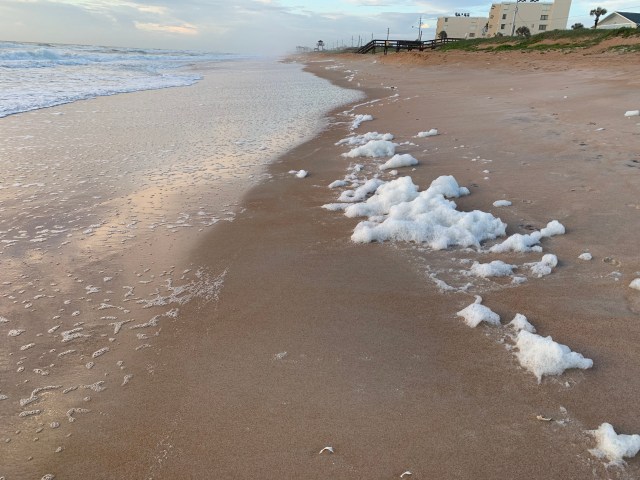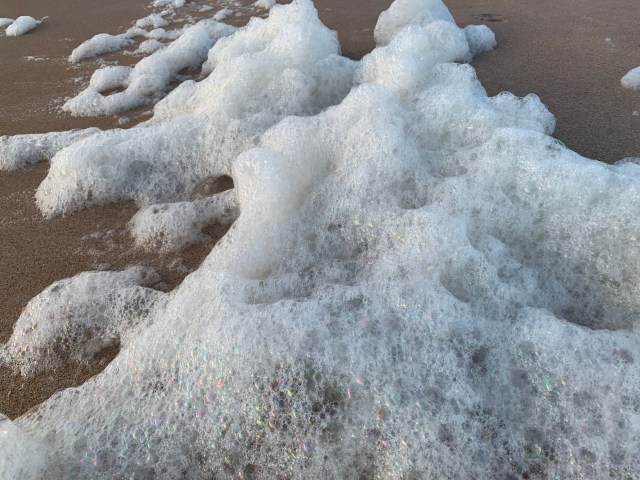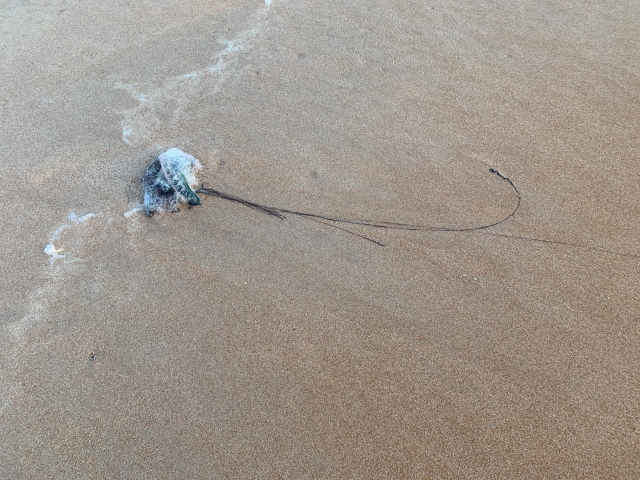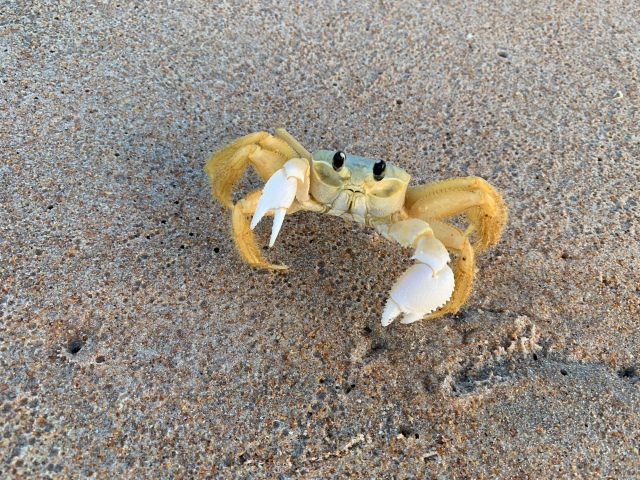
We have a little anomaly low pressure system out in the Atlantic to the southeast of us. It’s trying to form into something stronger, perhaps a sub-tropical low, or even a very early season tropical storm. Chances are it will do nothing but weakly move out to sea, but it is sending in occasional bands of rain, and churning up the ocean. As a result, we have very turbulent water inshore, and consequently, a lot of sea foam on the beach. Driven by an east wind, this foam was ankle to thigh deep in places on the walk this morning. The larger clumps would billow and move to the west as you walked through, diminishing by degrees until there was nothing left. Fun to watch.
Sea foam is a fascinating phenomenon, with many parts to its development. The first element, of course, is an agitated sea. Continuously breaking waves create bubbles. These bubbles attract and attach to tiny particles of organic matter: fish poop, decayed fish, plant life, even human produced garbage, all of which, in a quiet sea, settles to the bottom. These bubbles, with their attached organic matter, are buoyant and naturally rise to the surface, aggregate in colonies, (surface tension, etc.), are then propelled by waves, and blown shoreward by the wind. That’s a very simple description of what happens, but it suffices. It’s waste; and it evaporates.

There you have it. As a result of its constituent parts, sea foam is very high in protein, which makes it a great food source for a variety of organisms, most too small to be visible. And it just blows away to nothing before your eyes. Amazing.
We also encountered a couple of other interesting critters on our morning walk. This is a Portuguese Man of War. They are not normally found in our beach zone, but when there is a sustained east wind for a few days they can be blown in from the Gulf Stream and we see quite a few. Note the long tentacles on this rascal. That’s what stings, and they can be quite painful, and in some cases, deadly.

Then there was this chap, one of my favorite critters on the shoreline. Ounce for ounce, crabs are maybe the most defensive, territorial, and aggressive animals around. They won’t back down from anything, no matter how big. Gotta like that.


Thank you Sam. It’s very good to see the beach again. Goodness knows when we will see you guys again but I hope it’s soon. With love to you both, Fred
On Sat, May 16, 2020 at 7:32 PM The Skinny Island Post wrote:
> Samuel Harrison posted: ” We have a little anomaly low pressure system out > in the Atlantic to the southeast of us. It’s trying to form into something > stronger, perhaps a sub-tropical low, or even a very early season tropical > storm. Chances are it will do nothing but weakly mov” >
Hey Fred, thanks for checking in. Yeah, these are trying times. The big coming out, I hope, will be for the November Election!